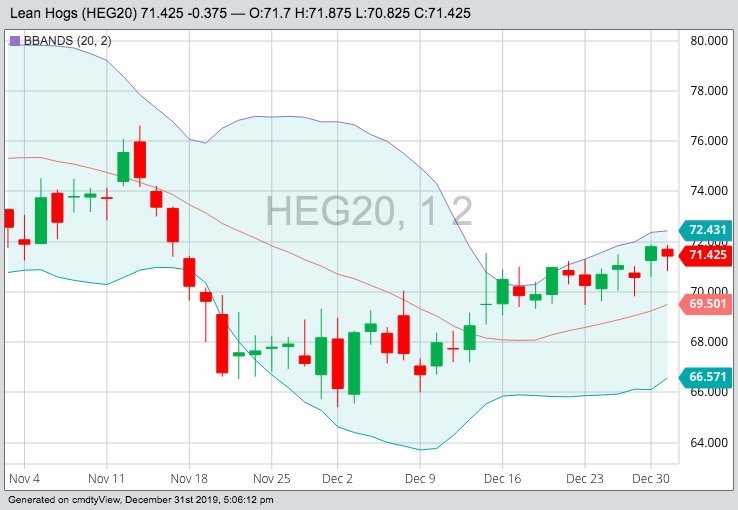Chicago | Reuters — U.S. hog futures rose in 2019 on hopes China will further increase pork imports as an outbreak of a fatal pig disease ravaged the Chinese herd.
Prices eased on Tuesday as traders adjusted positions and booked some profits before the end of the year.
The African swine fever disease has reshaped global meat markets by pushing China to search the world for meat to replace millions of dead pigs.
The United States has been at a disadvantage to other suppliers such as Europe since last year because Beijing imposed retaliatory tariffs on imports of U.S. pork as part of the countries’ trade war.
Read Also

Alberta crop conditions improve: report
Varied precipitation and warm temperatures were generally beneficial for crop development across Alberta during the week ended July 8, according to the latest provincial crop report released July 11.
U.S. President Donald Trump said the so-called Phase 1 of a trade deal with Beijing would be signed on Jan. 15 at the White House. China has committed to buying more U.S. farm products under the agreement, although details have not been announced.
“If there’s one commodity that you would think the Chinese would earmark, it would be the pork,” said Don Roose, president of U.S. broker U.S. Commodities.
Most actively traded February lean hog futures sagged 0.375 cent to 71.425 cents/lb. at the Chicago Mercantile Exchange on Tuesday. However, the contract ended up 7.9 per cent for the year.
U.S. farmers hope China eliminates its retaliatory tariffs or issues more waivers to tariffs in 2020. They see pork sales to China as a once in a lifetime opportunity during the African swine fever outbreak.
The disease has cut China’s pig herd by more than 40 per cent and China said it will sell more frozen pork from its state reserves to ensure supplies.
“Our prices are cheap, well under China,” Roose said. “You would think it’s logical you’d have the big buying.”
For January through October, the latest data that is available, U.S. pork exports to China and Hong Kong were up 55 per cent in volume and 34 per cent in value, according to the U.S. Meat Export Federation, a trade group. Exports to the region already exceeded the full-year totals of 2018.
U.S. supplies of pork remain ample after farmers expanded the herd to a record number of hogs. Cattle supplies are also plentiful, and domestic and export demand for beef has been strong.
Most actively traded February live cattle futures slipped 0.5 cent to 125.925 cents/lb. at the CME and ended up 6.5 per cent on the year. March feeder cattle futures dipped 0.275 cent to 144.225 cents/lb.
— Tom Polansek reports on agriculture and ag commodities for Reuters from Chicago.















